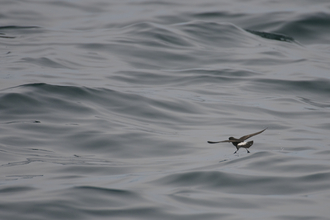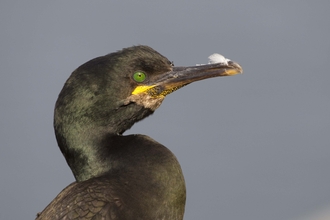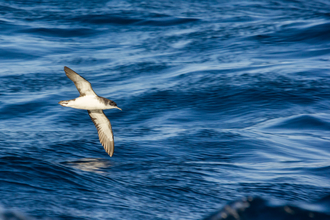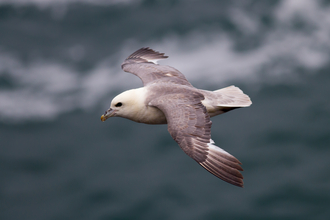
Shag
Standing sentry
Often called the crow of the sea, the European shag is medium sized seabird with dark plumage, possessing a patch of bright yellow skin at the base of a long black bill. They stand sentry on the rocks with their wings outstretched like pterodactyls, looking like they are guarding the islands.
Shags are long-bodied birds with broad wings and goose-like necks, part of the genus Phalacrocorax that are known as Old World cormorants. Their webbed feet echo the anatomy of the gannet, being joined across all four toes, and their thick beaks are hooked at the end, allowing for easy fish-grabbing when diving. Shags are known to be one of the deepest divers among the Cormorant family, recorded to reach an astonishing depth of 45m (148 ft). However, since they feed inshore, shags are vulnerable to stormy weather and struggle to hunt in rough seas. Extended periods of bad weather can cause entire populations to suffer.
During the breeding season, their feathers develop a distinct iridescent sheen which contributes to their alternative name of green cormorant, matching the spectacular emerald pigment of their eyes. They also develop a singular black crest that curls on top of their slim, prehistoric heads, giving them their name shag, which is a very old word that means ‘tufted.’ On Scilly, shags can be seen all year round on rocky outcrops and the uninhabited islands. Being sedentary seabirds they are rarely observed away from land. Shags can often be seen perched on rocks drying their half-open wings, since their plumage is only partly waterproof.
Like many seabirds, European shags are monogamous. Bonds made during the breeding season can often last over many successive years. They breed on the coastlines, preferring rocky ledges or small crevices, making their nests out of messy piles of rotting seaweed, twigs, and feathers, cemented together by their own guano. These nests have been described as having a strong, unpleasant smell. The nesting season is long and the period of egg-laying varies from year to year, some individuals not building their nests until May or later. Shags usually produce a clutch of 3 eggs. Newly hatched chicks rely totally on their parents for warmth as they are born without down (a layer of fine, insulating feathers).
European shags are the only member of the monotypic genus Gulosus, which derives from the Latin word for glutton. Their behaviour of feeding in dense flocks and the wide range of fish in their diet most likely contributes to this description.
Shags are one of our most common seabirds on the Isles of Scilly, with over 1,000 breeding pairs. In contrast, there are relatively few cormorants (a potential confusion species), with only around 50 pairs breeding on the islands.
Find out more
The Isles of Scilly are famed for their amazing marine life. Find out more about shags nationally and other seabirds you can find on Scilly...






